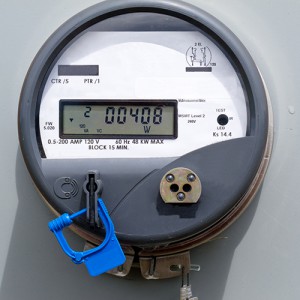 On occasion I like to feature a job or profession that makes use of technology in new and unique ways. Recently I highlighted technology in farming and today it struck me as I was walking down the street that a lot of cool innovation is in use by our utility companies. This seems like a fairly staid industry at first glance, but utility companies are deploying some technologies that make their products (electricity, gas, water) more cost effective and their delivery and monitoring more efficient.
On occasion I like to feature a job or profession that makes use of technology in new and unique ways. Recently I highlighted technology in farming and today it struck me as I was walking down the street that a lot of cool innovation is in use by our utility companies. This seems like a fairly staid industry at first glance, but utility companies are deploying some technologies that make their products (electricity, gas, water) more cost effective and their delivery and monitoring more efficient.
Electric Utility
Utilities such as Pacific Power here in the Northwest are installing automated meters that can be read from a vehicle on the street rather than requiring a person to enter a customer’s property. The new meters are equipped with a radio module for transmitting data and are read by a roaming utility vehicle equipped with a radio receiver and computer. That information is downloaded to billing and accounting systems to generate utility bills. Perhaps driverless cars can take over in the future, or data can be transmitted wirelessly to the utility, thus eliminating the use of a vehicle. This is a way that IT can add value to the electric utility industry.
Water Utility
The New York City Department of Environmental Protection is installing automated water meters that transmit water usage to nearby rooftop antennas. This eliminates the need to drive around reading meters, which in New York City is a big plus. The technology reduces the need for estimated billing based on prior usage, which was always a best guess and caused a utility to either charge too much or too little. Automated meters reduce the error and the need to adjust bills. This technology enables customers to view daily usage via an online interface and may inspire them to conserve water.
Gas Utility
Natural gas meters use the same automated devices as water and electric utilities. One of the benefits of these devices, particularly in places like New York City where data is transmitted up to four times a day, is the utility company can promptly detect and respond to a leak. Current data is compared to a known baseline or to an averaged norm and if there is a large anomaly the system can flag an inspector to investigate. No more dangerous gas leaks, flooded yards, or large gas or water bills. IT to the rescue!
Thoughts
I began thinking about this technology while walking down the street and noticing black mushroom-looking devices on the lids of pit meters embedded in sidewalks and driveway aprons. I had never seen them before and my curiosity got the better of me, and there was a utility worker nearby I could ask. Many cities have already completely converted to automated meters and enjoy the conveniences of accurate data collection and billing. In future blogs, I will continue highlighting technology in other sectors. Have you ever thought about unique applications of technology? Sometimes it can come to you out of the blue while you are walking down the street.
 About Kelly Brown
About Kelly Brown
Kelly Brown is an IT professional, adjunct faculty for the University of Oregon, and academic director of the UO Applied Information Management Master’s Degree Program. He writes about IT and business topics that keep him up at night.






